by The History Chicks | Aug 28, 2013 | News, Podcasts
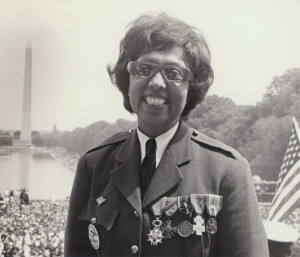
Josephine, wearing her French Resistance uniform and her medals from her service in WW2.
On this 50th Anniversary of The March on Washington,
we thought we would share the text of Josephine’s speech from this memorable day.
Here it is, in its entirety:
“Friends and family…you know I have lived a long time and I have come a long way. And you must know now that what I did, I did originally for myself. Then later, as these things began happening to me, I wondered if they were happening to you, and then I knew they must be. And I knew that you had no way to defend yourselves, as I had.
And as I continued to do the things I did, and to say the things I said, they began to beat me. Not beat me, mind you, with a club—but you know, I have seen that done too—but they beat me with their pens, with their writings. And friends, that is much worse.
When I was a child and they burned me out of my home, I was frightened and I ran away. Eventually I ran far away. It was to a place called France. Many of you have been there, and many have not. But I must tell you, ladies and gentlemen, in that country I never feared. It was like a fairyland place.
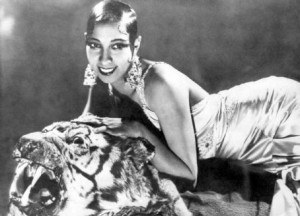
And I need not tell you that wonderful things happened to me there. Now I know that all you children don’t know who Josephine Baker is, but you ask Grandma and Grandpa and they will tell you. You know what they will say, “Why, she was a devil.” And you know something…why, they are right. I was too. I was a devil in other countries, and I was a little devil in America, too.
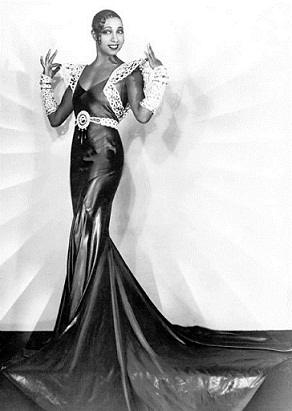
Devillment ran in her very blood. 🙂
But I must tell you, when I was young in Paris, strange things happened to me. And these things had never happened to me before. When I left St. Louis a long time ago, the conductor directed me to the last car. And you all know what that means.
But when I ran away, yes, when I ran away to another country, I didn’t have to do that. I could go into any restaurant I wanted to, and I could drink water anyplace I wanted to, and I didn’t have to go to a colored toilet either, and I have to tell you it was nice, and I got used to it, and I liked it, and I wasn’t afraid anymore that someone would shout at me and say, “Nigger, go to the end of the line.” But you know, I rarely ever used that word. You also know that it has been shouted at me many times.
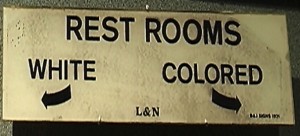
Jim Crow sign.
So over there, far away, I was happy, and because I was happy I had some success, and you know that too.
Then after a long time, I came to America to be in a great show for Mr. Ziegfeld, and you know Josephine was happy. You know that. Because I wanted to tell everyone in my country about myself. I wanted to let everyone know that I made good, and you know, too, that that is only natural.
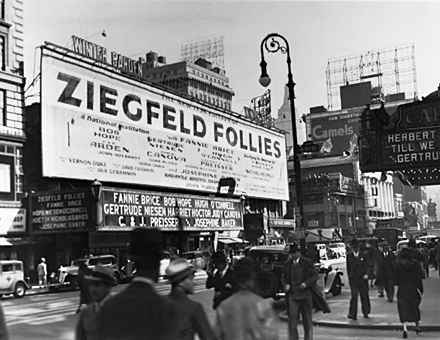
Josephine’s show at the Follies (see lower right)
But on that great big beautiful ship, I had a bad experience. A very important star was to sit with me for dinner, and at the last moment I discovered she didn’t want to eat with a colored woman. I can tell you it was some blow.
And I won’t bother to mention her name, because it is not important, and anyway, now she is dead.
And when I got to New York way back then, I had other blows—when they would not let me check into the good hotels because I was colored, or eat in certain restaurants. And then I went to Atlanta, and it was a horror to me. And I said to myself, My God, I am Josephine, and if they do this to me, what do they do to the other people in America?
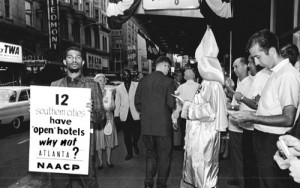
Josephine fought against hotel discrimination.
You know, friends, that I do not lie to you when I tell you I have walked into the palaces of kings and queens and into the houses of presidents. And much more. But I could not walk into a hotel in America and get a cup of coffee, and that made me mad. And when I get mad, you know that I open my big mouth. And then look out, ‘cause when Josephine opens her mouth, they hear it all over the world.
So I did open my mouth, and you know I did scream, and when I demanded what I was supposed to have and what I was entitled to, they still would not give it to me.
So then they thought they could smear me, and the best way to do that was to call me a communist. And you know, too, what that meant. Those were dreaded words in those days, and I want to tell you also that I was hounded by the government agencies in America, and there was never one ounce of proof that I was a communist. But they were mad. They were mad because I told the truth. And the truth was that all I wanted was a cup of coffee. But I wanted that cup of coffee where I wanted to drink it, and I had the money to pay for it, so why shouldn’t I have it where I wanted it?
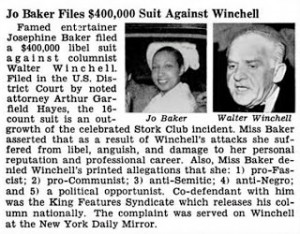
Newspaper article of Josephine’s libel suit against gossip columnist Walter Winchell.
Friends and brothers and sisters, that is how it went. And when I screamed loud enough, they started to open that door just a little bit, and we all started to be able to squeeze through it. Not just the colored people, but the others as well, the other minorities too, the Orientals, and the Mexicans, and the Indians, both those here in the United States and those from India.
Now I am not going to stand in front of all of you today and take credit for what is happening now. I cannot do that. But I want to take credit for telling you how to do the same thing, and when you scream, friends, I know you will be heard. And you will be heard now.

Aerial view of The March on Washington, August 28th, 1963.
But you young people must do one thing, and I know you have heard this story a thousand times from your mothers and fathers, like I did from my mama. I didn’t take her advice. But I accomplished the same in another fashion. You must get an education. You must go to school, and you must learn to protect yourself. And you must learn to protect yourself with the pen, and not the gun. Then you can answer them, and I can tell you—and I don’t want to sound corny—but friends, the pen really is mightier than the sword.
I am not a young woman now, friends. My life is behind me. There is not too much fire burning inside me. And before it goes out, I want you to use what is left to light that fire in you. So that you can carry on, and so that you can do those things that I have done. Then, when my fires have burned out, and I go where we all go someday, I can be happy.
You know I have always taken the rocky path. I never took the easy one, but as I get older, and as I knew I had the power and the strength, I took that rocky path, and I tried to smooth it out a little. I wanted to make it easier for you. I want you to have a chance at what I had. But I do not want you to have to run away to get it. And mothers and fathers, if it is too late for you, think of your children. Make it safe here so they do mot have to run away, for I want for you and your children what I had.
Ladies and gentlemen, my friends and family, I have just been handed a little note, as you probably say. It is an invitation to visit the President of the United States in his home, the White House.
I am greatly honored. But I must tell you that a colored woman—or, as you say it here in America, a black woman—is not going there. It is a woman. It is Josephine Baker.
This is a great honor for me. Someday I want you children out there to have that great honor, too. And we know that that time is not someday. We know that that time is now.
I thank you, and may God bless you. And may He continue to bless you long after I am gone.”
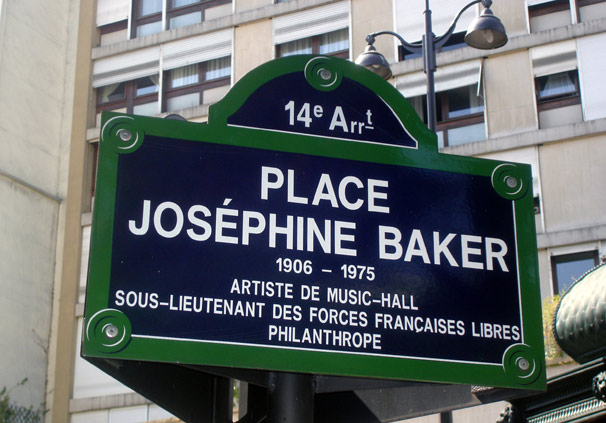
Josephine is honored in her adopted country.
Want to read more about Josephine Baker?
Go here:
Episode 34; Josephine Baker, Part 1 (shownotes)
and here:
Episode 35: Josephine Baker, Part 2 (shownotes)
Want to listen, instead, to what we had to say?
Follow these links:
Episode 34; Josephine Baker, Part 1 (audio)
or
Episode 35: Josephine Baker, Part 2 (audio)
by The History Chicks | Jan 21, 2013 | Episode, Podcasts
In this episode we continue our chat about the many acts in the life of Josephine Baker. When we went to intermission, Ms Baker was touring the world as an entertainment superstar with the help of her manager/fake husband/fake Count, Pepito Abatino. The one place that she had left to embrace her was her native country, the good ol’ US of A. When the house lights went up we were biting our nails! Would her homeland love and appreciate her as much as the people of other continents? Could Josephine go home?

Act Three
(It’s 1934 and Josephine is taking the stage at the Ziegfield Follies in New York expecting a warm and loving response)
Crickets chirp.
Josephine didn’t have to get far onto US soil before she faced racial prejudice. As a ‘married” couple she and Pepito could share a hotel room, but not an entry door into the hotel. Her performances were not met with a warm reception for a variety of reasons: she danced with white male partners, her level of undress made audiences uncomfortable, and the songs that she was required to sing were not suitable for her voice. Her part in the show was your basic hot mess. Josephine blamed Pepito and sent him away, back to France ending their ten year relationship…and quite possibly his life. He was hospitalized and died of unknown causes a few weeks later. Stomach cancer or a broken heart?
Josephine got out of her contract and the US as quickly as possible. Shortly afterward she married Jean Lion, a wealthy French businessman. With this marriage she legally became a French citizen and had hopes of becoming a mother. Jean apparently had high hopes of her becoming his most fabulous accessory, a trophy wife. But first, Josephine must say good-bye to her public and set off on a farewell tour.
The only thing that fully got the good-bye and farewell part is the marriage; it doesn’t last long.
But our newly minted French citizen had some very important work in her future. WWII began and she volunteered to assist the war effort for her country. Her touring continued from country to country with one major difference: She was doing it as a spy for the French Resistance. She used her lifestyle of hobnobbing with those in the know to get intel and smuggled it back with her hat boxes and costumes, and eventually raised in ranks within the French Free Air Force.
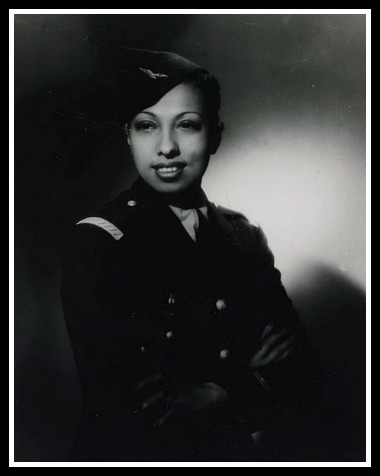
Josephine in uniform
As always we go into much more detail in the podcast but essentially her spy duties came to a halt when she was hospitalized in Casablanca for 19 months.
But that wasn’t the end of the war efforts of our heroine! Once recuperated, she went back on the road, this time helping to spread a message of brotherly love by entertaining racially integrated audiences of soldiers. Ultimately she received two prestigious awards for her work in the war, the Croix de Guerre and the Medal of Resistance. And by the end of the war, she entered her fourth marriage, to her band conductor- Jo Boullion.
The war ws over, but Josephine still has some fight in her. At this point in her life, she directed it toward the fight for racial equality. She not only had lofty goals she had big…no, massive plans.
First she and Jo remodeled an old castle she named Les Milandes, in the south of France, into a tourist destination with a theme of brotherly love. This pricey undertaking required some capital, so off she went on another world tour. This time she was confronted with more racial barriers and opportunities for her to use her celebrity. One, an incident in New York’s famous Stork Club that involved then popular newscaster, Walter Winchell, got her banned from reentering the US for many years. (It’s a doozie, and we gossip on about the details in the podcast)
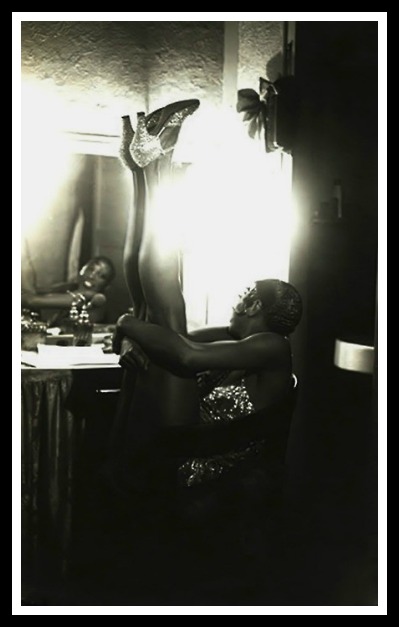
Next up, Josephine embarked on a plan to finally put herself in the role of a lifetime: Mother. She and Jo began to adopt babies of all colors and nationalities from around the world. They named the TWELVE children, The Rainbow Tribe.
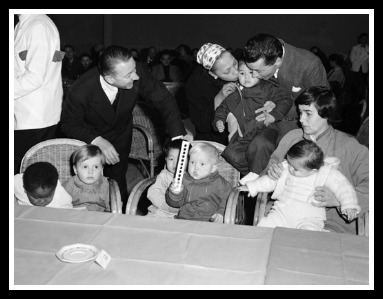
Jo and Josephine with their young, and as yet incomplete, tribe
But it’s not all rainbows and sunshine for this unique family.
Act Four
(Open on Jo driving away from Les Milandes, Josephine and 12 stunned children left in his wake)
Josephine and Jo didn’t see eye-to-eye on many things. Ahem, many – but one important one being the children: How many? How to raise them? When was enough enough? When Josephine was on tour, the children were raised by Jo and a series of nannies at Les Milandes. Mama would breeze in, sometimes with a new brother or sister- take a few pictures, love on them all, then go back on the road. The costs of the constant renovations to the castle were astronomical, and eventually she was so far in debt she couldn’t get ahead. Jo couldn’t understand her, deal with her, take it- whatever his reasons, he left – although they never divorced.
On one hand she had this falling down resort that is getting her more and more in debt each day and is filled with her very large family.
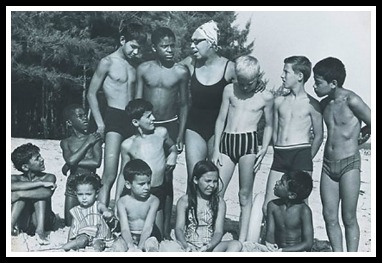
The tribe has grown and are growing up
On the other hand, she was doing civil rights work all over the world as she was touring . She even spoke with Martin Luther King, Jr at the March on Washington as the only official woman speaker.

Josephine at the March on Washington
So what hand won?
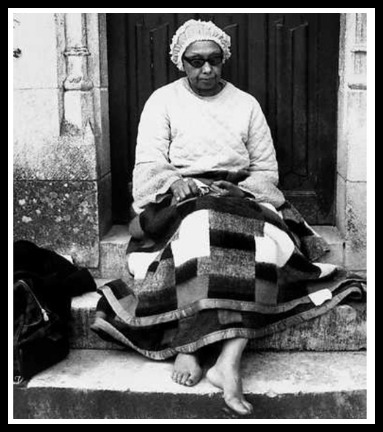
Josephine after being forced out of Les Milandes
Not Les Milandes. She got physically tossed out of it. But that’s again, not the end. Over the next few years, in not so short order: Princess Grace rescued her, helped set her up in a sweet villa in Monaco and funds a comeback show.
Opening night in Paris. It’s April, 1975 and Josephine is 68 years old. Does the old girl still have what it takes, or has Paris already seen the best she had to offer years before? Is she a washed up has-been, or a timeless superstar?
When the reviews came in the roaring cry was… Superstar!
Josephine was back on the stage, the cheers of the crowd ringing in her ears- she was a success.
The next day, no one could wake her as she lay among her rave reviews in the papers. She would never awake again. Within the week she was declared dead of a brain hemorrhage on April 12, 1975.

Josephine’s funeral procession through the streets of Paris
Fin
TIME TRAVEL WITH THE HISTORY CHICKS

You can visit Les Milandes without ever leaving your house! This is a really fun website and one of the few where we don’t mind music. Les Milandes Website.
If you are leaving your house and headed to New York, maybe you can dine at Chez Josephine, NYC.
Although her life really reads like a movie, this is the one movie that we could get our hands on: 1991 The Josephine Baker Story starring Lynn Whitfield.
We know you like your books and here are the ones that we recommend for this woman:
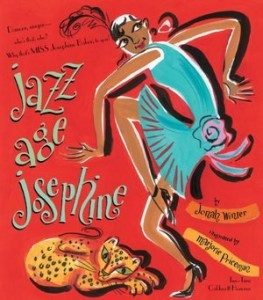
Children’s book: Jazz Age Josephine by Jonah Winter illustrated by Marjorie Priceman
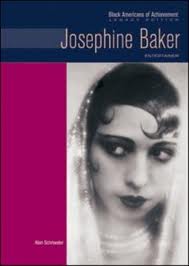
Middle Grade-Josephine Baker: Entertainer by Alan Schroeder
Have your own compare and contrast fest with these three biographies:

The Josephine Baker Story by Ean Wood
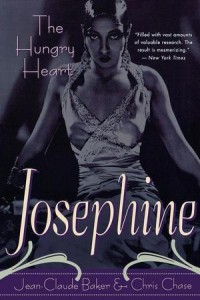
Josephine Baker: The Hungry Heart by Jean-Claude Baker and Chris Chase
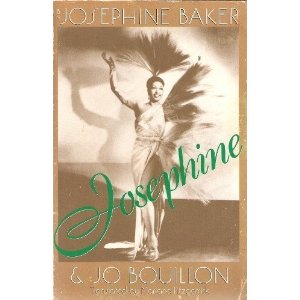
Josephine by Josephine Baker and Jo Bouillion
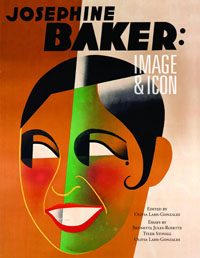
Josephine Baker: Image and Icon by Olivia Gonzales
As always, our music comes courtesy of Music Alley. Visit them at Music.mevio.com
by The History Chicks | Jan 13, 2013 | Biography Episode, Episode, Podcasts, Shownotes
Josephine Baker is often remembered simply as the woman who danced wearing nothing but a skirt of bananas in Paris during the 1920’s. But her life was far from simple. She was not only a dancer and singer, but also a spy, a civil rights activist and a mother. She reinvented her life by sheer will and wits so many times that it’s not surprising that there are as many variations to her tale as there were roles in her life.
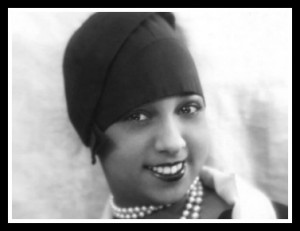
A young Josephine Baker
When we sat down to talk about this unique woman, we went a little long. Josephine wrote several auto-biographies- each painting a slightly different picture of her life. Several more biographies were written after her death- each giving slightly different details. Once we began our chat, we often ran into conflicting stories…it was so cool! Did she or didn’t she? Was she or wasn’t she? So many versions!
History rocks. It really does.
***And the story of Josephine’s life is also a little racy, parents may want to preview the podcast first it to decide if it’s age appropriate for their kids.***
We have divided our conversation into two parts, and the show notes into acts. She was different from anyone in her generation (although she reminded us of several woman since) it seems fitting that our coverage of her life should be a bit different as well.
ACT ONE: A CHILDHOOD OF POVERTY
(Open on a poor, urban neighborhood in 1906)
On June 3, in St. Louis, Missouri Freda Josephine McDonald was born to Carrie McDonald. Listed as her father on her birth certificate:”Edw”. Mysterious! The father of record is Eddie Carson, a drummer who Carrie had spent a great deal of time with. Eddie would deny his role in the life of the baby who her mother nicknamed, “Tumpy”. To deepen the paternal mystery- Carrie was very dark skinned, and Josephine was quite light. Even her birth had enough gaps to allow various tales to emerge. Hold on tight for the rest of her life!
We know this: She was born into poverty and lived in poverty for her entire childhood. Mama Carrie would pass Josephine back and forth between Grandmother Caroline and Aunt Elvira and Carrie’s home. As always we go into greater detail during the podcast, but Carrie soon married Arthur Martin and the couple would have three more children. Carrie worked as a laundress, Arthur worked at whatever he could whenever he could, but the family was never able to dig themselves out of poverty.
Josephine was sent to school, but she didn’t attend for long. Some times she was shipped off to work for families other times, as she got older, she would simply skip class. When she was ten, race relations is St. Louis heated up and resulted in a serious time of rioting.
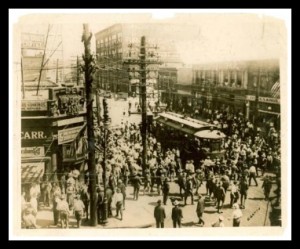
A trolley in East St. Louis is blocked by rioters in 1917
While East St. Louis burned during the riots, Josephine was safely on the OTHER side of the city. But the event most probably impacted her life, having such hatred and danger within walking distance would have to have been frightening.
At the age of 13, Josephine had her first marriage to Willie Wells, a steelworker. This didn’t last long, something about Josephine faking a pregnancy…or maybe being pregnant and having an abortion led to Willie leaving and never returning.
ACT TWO: BIRTH OF A SUPERSTAR
(Open on a young Josephine staring wistfully at an old, run down but still operational theater)
So maybe marriage wasn’t Josephine’s ticket out of her sad family life. She had been drawn to the theater, most specifically the Booker T. Washington Theater. There she would watch and imitate the acts, then take what she had learned outside to entertain patrons waiting for a show to begin. Eventually she worked her way into a dance troupe called, The Dixie Steppers.
With this troupe she would eventually go on the road, performing all over the south-eastern portion of the US and then heading north to Philadelphia, Pennsylvania.
By the time Josephine reached Philly she had begun to create the comedic moves and offstage persona that would take her far.
But first, she had to get married again. This time the man, Billy Baker, gave her a small moment of familial stability and the last name that she would use for the rest of her life.
While Josephine had been taking steps up the performance ladder she kept her eye on the next level. With a few fancy moves of her own, the untrained dancer earned a spot on the first all-black show that played on Broadway, Shuffle Along.
So long, Philly and so long Billy!
In New York, and traveling throughout the country with the road show, Josephine honed her craft to the best of her ability, although was probably a choreographers nightmare. She was not only an untrained dancer, but her style included rolling her eyes, making funny faces and breaking into the dances of the age. While the audiences loved her comedic antics, the rest of the cast wasn’t amused about being upstaged. Another challenge for her was the color of her skin. Too light for some chorus lines, too dark for others.
Josephine moved to other shows when Shuffle Along closed, and was a prominent figure in the Black Renaissance of Harlem during the early 1920’s. She watched other successful acts, added (read:stole) new material for hers and worked more on her off-stage diva persona. She would strut around the streets and in after-hours clubs in increasingly outlandish outfits making sure that she was seen by as many eyes as possible. She dated as many men as she could, and worked day and night to develop a wild and exotic image.
In modern vernacular- she was establishing her brand.
Through another series of situations where she saw an opportunity and clawed her way to it, 19 year-old Josephine was soon cast in a new show being produced by an American named Caroline Reagan who wanted to bring the flavor of the Black Renaissance and American Jazz…to Paris.
(Montage to show almost overnight success of rising American chorus girl to Superstar in Paris)

Josephine entertains Parisians with exotic American dances like The Charleston and other truly exotic routines
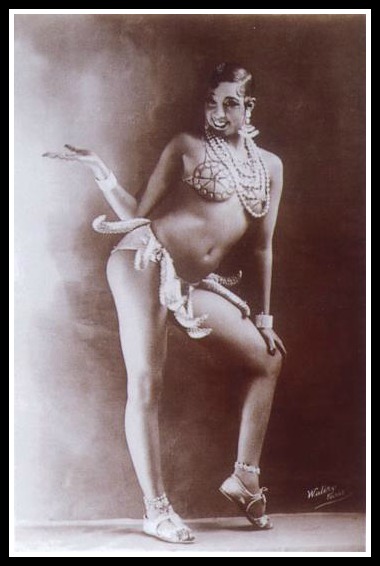
Josephine shows off the costume (plus a bikini top that she wouldn’t have been wearing on stage) for her famous Banana Dance
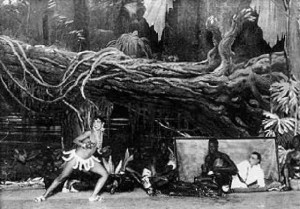
The set for her Banana Dance
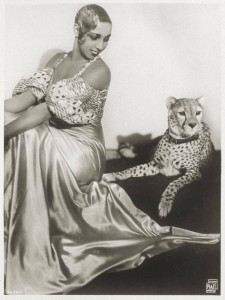
An almost overnight sensation, Josephine’s offstage and onstage personas melt into one bright, exotic superstar. Here with her pet cheetah, Chiquita
How did she climb so far, so fast in a country where she could barely speak the language? Partially because she was an exotic act to them from her first step on stage- they hadn’t seen anything like her and her charisma and antics won them over. Partially because she was willing to reinvent herself as audiences bored of her act. Partially because she was bold and brazen and very little frightened her. And partially because of a man she met early on in her days in France- “Count” Pepito de Abatino. Pepito was as much of a Count as Josephine was- that is to say, not at all. But when she paired up with him as her manager (and lover and fake husband) she began to soar. Paris couldn’t contain her so she toured all through Europe and South America causing both scandal and admiration as she did.
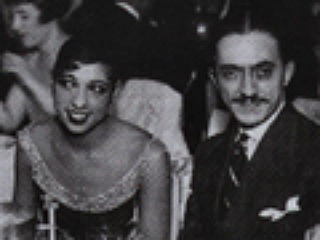
Josephine and Pepito, Paris circa 1927
Josephine was huge in a great portion of the world, but her native country had yet to embrace her. Ten years after Pepito took her career to a level she had never imagined, he took her someplace that she dreamed of taking like she had Europe. He got her a booking in America. Could Josephine become a superstar on her native soil? Would her own country shun or warmly welcome her arrival?
*INTERMISSION*
TIME TRAVEL WITH THE HISTORY CHICKS
We will post all of our book and media recommendations in Part Two, but thought you might like a select YouTube tour of Josephine’s life. All of the videos are PG -rated and will let you see her talent, her beauty and how she progressed through the years.
BANANA DANCE- Yes, we know- this is what you want to see and here is a version with a top on. Just watching this one video, we quickly saw what it was, that X factor that she possessed that drew people to see her. Lookit those bananas move!
From silent film 1927- This clip shows you her facial expressions and dance style- the moves that got her noticed even with no formal training.
Princess Tam Tam 1935– This is a short clip from one of her movies. She appears first at about 2:30, but the stage show is fun to watch.
Cha Cha circa 1950 – This is Josephine later in life, singing. She’s come a very long way (Baby) from the young banana dancer, don’t you think? Don’t Touch my Tomatos, and Cha Cha
Short interview with her later in life (SPOILER ALERT: This covers material in Part Two- it happened, you can read all about it, but we didn’t want to spoil it if you are waiting for us to tell you the story). This is in French. So you don’t speak french, so what? Just watch and hear her own voice talking in the language of her adopted country. She is watching Bridget Bardot speak on her behalf from her home in the early 1960’s.
As always, music comes courtesy of Music Alley. Visit them at Music.mevio.com
































